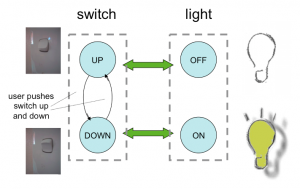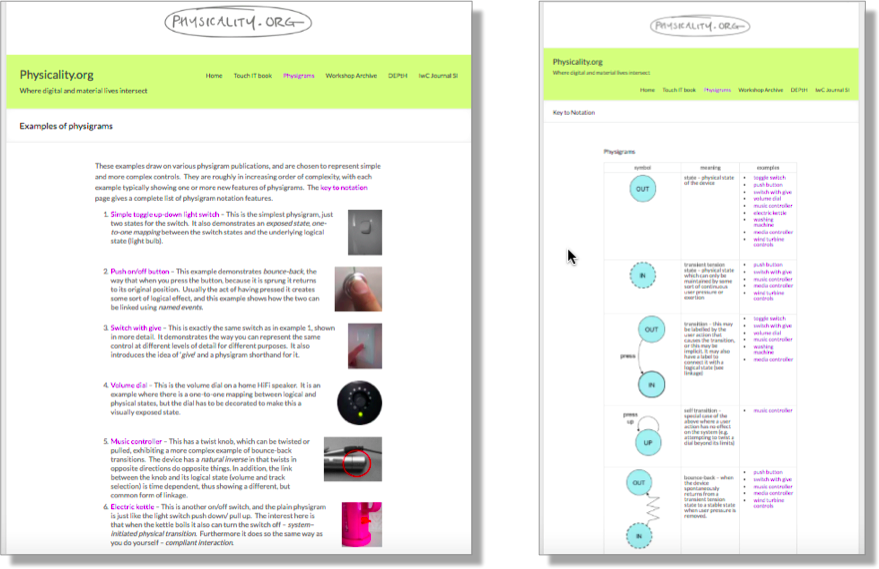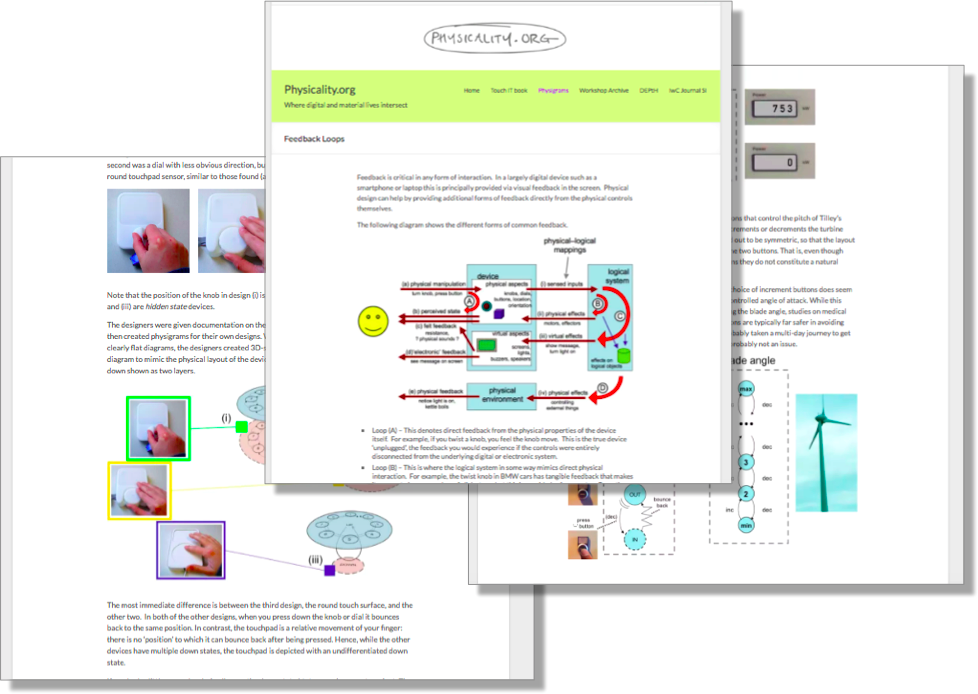Physigrams get their own micro-site!
See it now at at physicality.org/physigrams
Appropriate physical design can make the difference between an intuitively obvious device and one that is inscrutable. Physigrams are a way of modelling and analysing the interactive physical characteristics of devices from TV remotes to electric kettles, filling the gap between foam prototypes and code.
Sketches or CAD allow you to model the static physical form of the device, and this can be realised in moulded blue foam, 3D printing or cardboard mock-ups. Prototypes of the internal digital behaviour can be produced using tools such as Adobe Animate, proto.io or atomic or as hand-coded using standard web-design tools. The digital behaviour can also be modelled using industry standard techniques such as UML.
Physigrams allow you to model the ‘device unplugged’ – the pure physical interaction potential of the device: the ways you can interact with buttons, dials and knobs, how you can open, slide or twist movable elements. These physigrams can be attached to models of the digital behaviour to understand how well the physical and digital design compliment one another.
Physigrams were developed some years ago as part of the DEPtH project., a collaboration between product designers at Cardiff School of Art and Design and computer scientists at Lancaster University. Physigrams have been described in various papers over the years. However, with TouchIT ,our book on physicality and design (eventually!) reaching completion and due out next year, it felt that physigrams deserved a home of their own on the web.
The physigram micro-site, part of physicality.org includes descriptions of physical interaction properties, a complete key to the physigram notation, and many examples of physigrams in action from light switches, to complete control panels and novel devices.



